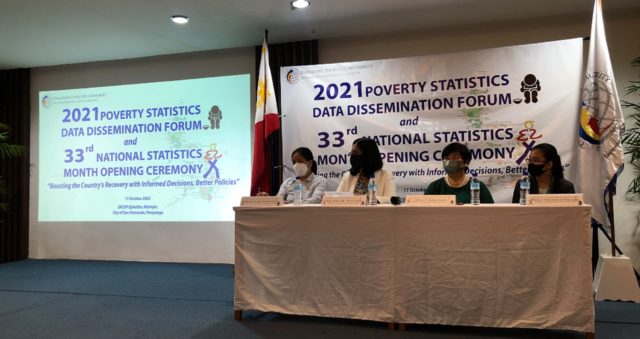
CITY OF SAN FERNANDO, Pampanga (PIA) — Philippine Statistics Authority (PSA) reported that about 1.4 million Filipinos in Central Luzon were poor in 2021.
This, as the result of the Family Income and Expenditure Survey (FIES) 2021 suggested that the poverty incidence among population in the region is at 11.4 percent, meaning 11 out of 100 individuals are poor.
PSA Regional Director Arlene Divino said these figures equate to about 248,000 families whose income cannot sufficiently meet the individual basic food and non-food requirement.
She added that in proportion, eight out of 100 families in 2021 are not earning enough to supply their minimum needs.
In addition, FIES 2021 results indicated that the poverty threshold or the minimum income required to meet basic food and non-food supplies in Central Luzon was estimated at P2,632 per individual per month.
This means that a family of five needed to earn at least P13,160 per month in 2021 to meet their basic needs.
FIES 2021 also suggested that the subsistence incidence among Central Luzon residents or the proportion of Filipinos whose income is not enough to meet even just the basic food needs was registered at 2.6%.
This depicts that about 321,000 individuals in 2021 in the region are considered food poor.
With these, National Economic and Development Authority Regional Director Gina Gacusan underscored that developmental policies should be strengthened to address Central Luzon’s prevailing poverty.
“The number one vision of the Philippines in 2040 is to eradicate poverty and achieve freedom from hunger. The target of our economy is that no one is poor, and no one is hungry,” she said.
Poor families in the region are observed to be headed by young parents who have not finished their education due to early pregnancy.
Some of these families are relying on agriculture, fisheries, and resources sectors for their needs.
Others are also facing the struggle of having low-income jobs but have many dependents.
To address these, Gacusan highlighted that there is a need to further promote responsible parenthood and family planning among couples.
The youth should finish higher education and get job opportunities, especially the women.
“Women should work. The labor force participation rate of women in Central Luzon is second lowest in the entire Philippines. Only 45% or less than half of the women actually join the labor force,” she said.
Gacusan furthered that for low-income workers, the region must push for climate resilient work or off-farm incomes, and provide climate-resilient practices in agriculture and fishery sectors.
Improved training programs and technical and vocational education must also be offered to create livelihood opportunities and job employment. (MJSC/JLDC-PIA 3)




